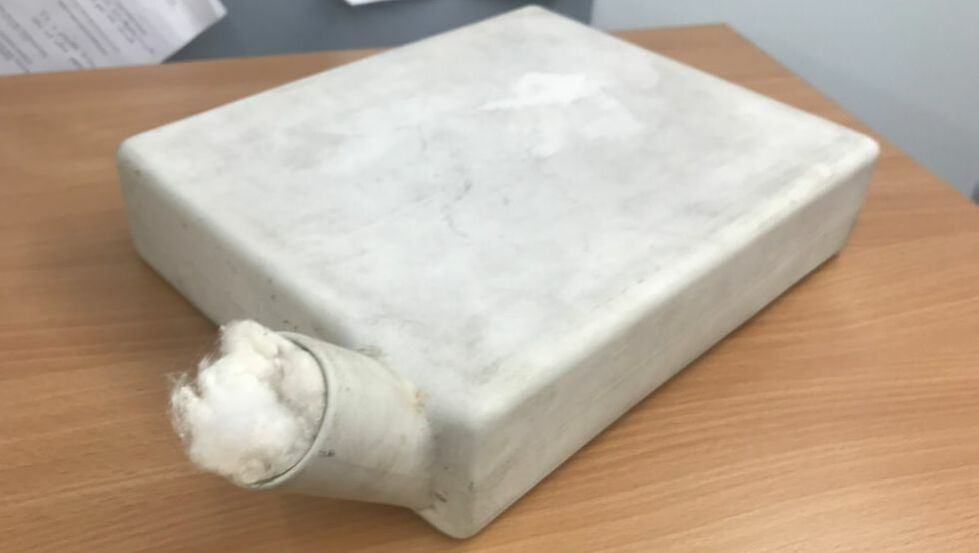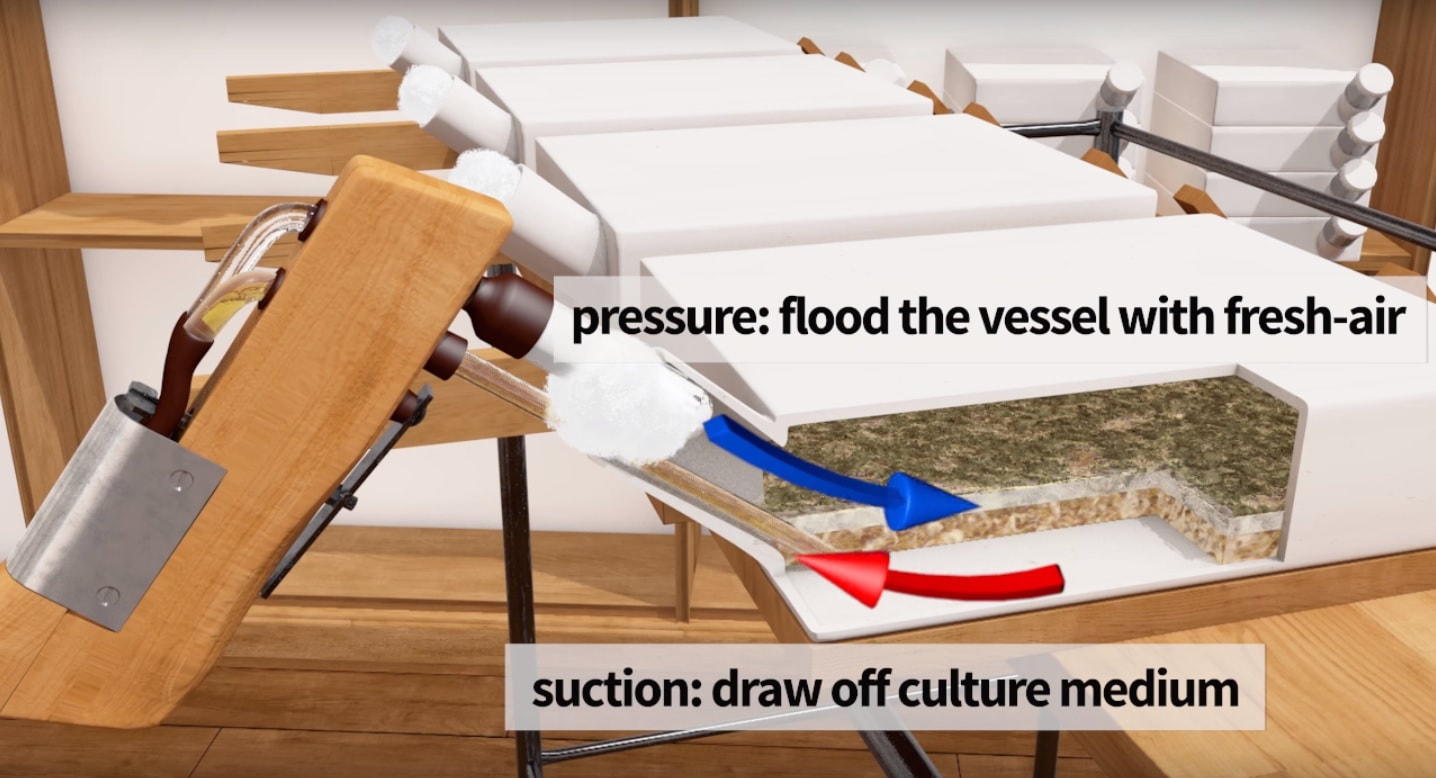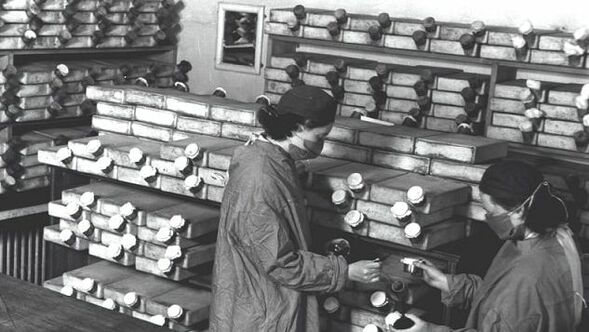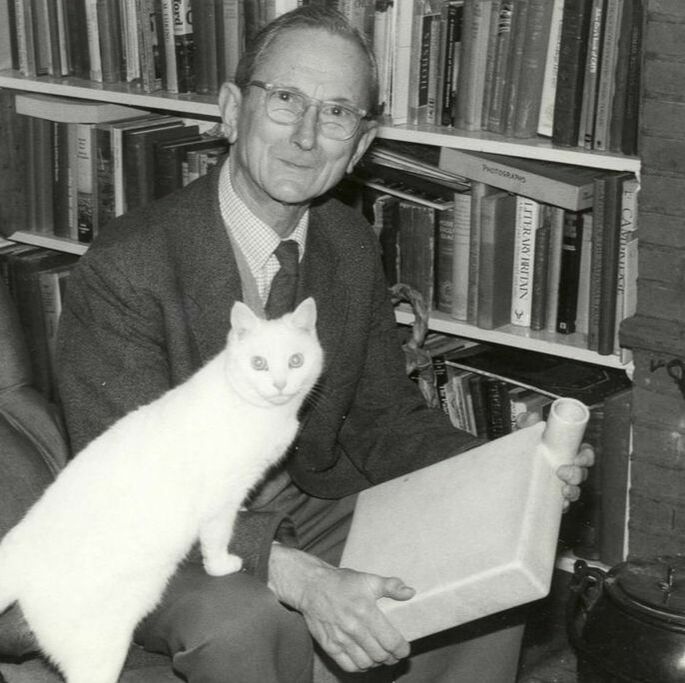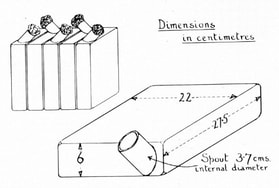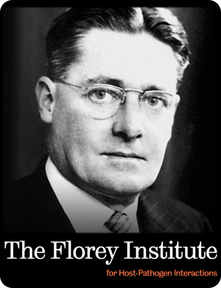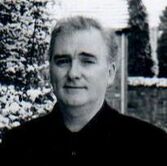
Frank Ryan is an emeritus consultant physician with an interest in medical and scientific history. He told us the story of a strange-looking vessel (pictures below) and its role in the early production of penicillin:
"This ceramic vessel was given to me by Norman Heatley, one of the pioneers of the penicillin story, when I interviewed him about his life in science in 1997. It was one of the vessels in which he produced penicillin at Oxford in the early trials before commercial production."
"This ceramic vessel was given to me by Norman Heatley, one of the pioneers of the penicillin story, when I interviewed him about his life in science in 1997. It was one of the vessels in which he produced penicillin at Oxford in the early trials before commercial production."
A ceramic vessel used for the early production of penicillin. Vessels were filled with media and inoculated with the penicillium mold which produced penicillin after eight days of growth.
For extraction and purification, air was blown into the vessels using a 'changing pistol' which forced air in and drew the culture medium, containing penicillin, out for further processing. (The full explanation of this process can be followed here: LINK)
Scaled production of penicillin using the culture vessels like those belonging to Frank Ryan. Image credit: http://www.penicillinstory.org
"I first came into contact with Dr Heatley after I wrote a book, Tuberculosis: The Greatest Story Never Told, which detailed the history of the discovery of the cure for tuberculosis. In essence this was an integral part of the history of discovery of antibiotics and chemotherapy of infection. Dr Heatley made an important contribution to the initial production of penicillin in sufficient purity and quantity to allow the early trials of its production, safety, efficacy and potential to treat a range of different bacterial infections."
"I first came into contact with Dr Heatley after I wrote a book, Tuberculosis: The Greatest Story Never Told, which detailed the history of the discovery of the cure for tuberculosis. In essence this was an integral part of the history of discovery of antibiotics and chemotherapy of infection. Dr Heatley made an important contribution to the initial production of penicillin in sufficient purity and quantity to allow the early trials of its production, safety, efficacy and potential to treat a range of different bacterial infections."
| Dr Norman Heatley, one of the unsung pioneers involved in the the penicillin story. | Early designs for the culture vessels. |
"Heatley missed out on the Nobel Prize in Physiology or Medicine awarded in 1945 to Alexander Fleming, Howard Florey and Ernst Chain. In the words of Sir Henry Harris, 'Without Fleming, no Chain or Florey: Without Florey, no Heatley; without Heatley, no penicillin.'"
A fantastic video showing how early penicillin production was carried out and the role these ceramic vessels can be found here: LINK
An archived video showing early production of penicillin can be found in the Wellcome Library: LINK
An archived video showing early production of penicillin can be found in the Wellcome Library: LINK
Ref: Harris H. Notes Rec. R. Soc. Lond., 1999; 53: 243-52
Image Credit: http://www.penicillinstory.org
and https://blogs.bodleian.ox.ac.uk/archivesandmanuscripts/tag/penicillin/
Image Credit: http://www.penicillinstory.org
and https://blogs.bodleian.ox.ac.uk/archivesandmanuscripts/tag/penicillin/
